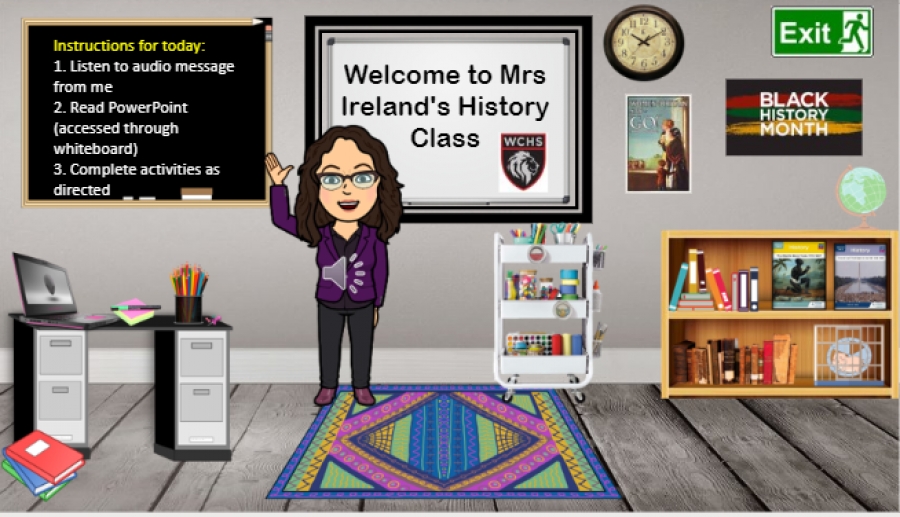Thankfully, I have great colleagues who made the transition back to work as easy as they could for me, but also, I have fantastic pupils who have, on the whole, risen to the challenge of digital learning and welcomed me back and into their virtual world.
Many people, teachers included, assume that all kids these days are digitally-literate, as they are never seen without a device of one sort or another in their hands. The opposite is true, though – they lack a huge amount of digital knowledge as they have everything at the touch of an app. This made remote learning a huge learning curve for us all.
I could not have taught as I did, and the kids couldn’t have learned as much if it had not been for the Microsoft packages we use. I have been using Microsoft Teams since it was rolled out in our council area in 2017, so felt comfortable with the basic usage setting assignments, making new teams and filing all lessons appropriately. However, I had never conducted meetings, recorded lessons, allocated all work through Class Notebook or supported students totally through Teams. At the beginning I would write a message saying "go to the folder in Files that says Abolitionists, find the lesson 2. Wilberforce and work through it". I would have loads of people asking how you find a file, how you download a file to your device or even where the files section was.
This led to discussions with colleagues, and we saw this as an opportunity to boost the digital literacy of, not only the teachers, but also the pupils and give them real world IT skills. PDF guides were made and video guides done to help pupils navigate the new “normal”. This also included meetings with entire year groups, where I shared my screen to show pupils step by step the actions they had to take to do certain core tasks that all teachers would require of them. I also did video calls with colleagues to talk them through how to make interactive PowerPoint slides to help increase pupil engagement.
The interactive virtual classrooms have been great. The kids enjoy the fact that there is some autonomy over when they complete the work, we must always remember that not all pupils have access to a dedicated laptop or tablet and are sharing with parents or siblings. To this end my school has handed out somewhere in the region of 200 devices to pupils from disadvantaged backgrounds (and dongles for internet access) or from homes where they are having to share devices.
I would not like to give the impression that it has all been plain-sailing. Engagement has been patchy in some year groups, and it can be difficult to support as you would in a class. However, use of Notebook has meant that we can have class debates and collaborative work as we would in the class. I have set statements in the collaboration space of Notebook and the pupils have to say what they think – this leads them to discussing the merits of the statements (sometimes controversial) and why they agree or disagree. As Notebook updates in real time I can also comment and this encourages deeper learning as I would do with them in class.
Also in Notebook, I used Bitmoji to create stickers with comments such as “Great work” or “Needs some thought” and then attached an audio file with spoken feedback so they are receiving that and can keep it for revision purposes later on. Notebook also helps the most disorganised of pupils keep all their notes in order and it also makes it easy for differentiation as pupils do not see who is receiving what work so it removes the stigma for pupils who find differentiation embarrassing.
Top tips:
- Do as many courses on https://education.microsoft.com/en-us as possible, this skills you up quickly
- Remember your pupils are not as digitally literate as you think – make instructions clear!
- Don’t be scared to try something new
- Set ground rules immediately, but don’t be afraid to change them if they are not working for you and your pupils
- Ask colleagues for help if needed, we still need that support even when working remotely
- Don’t try to reinvent the wheel but also don’t assume that you can use all your current materials
Around Christmas time a colleague from another school and I thought that it would be great to have a Team that all the History teachers in Scotland could join if they wanted to - the vision was that it would be a good way to share CPD opportunities, collaborate and help each other by sharing lessons, ideas and resources. This Team got up and running in early January and now has 680 members across Scotland. It has been a fabulous resource to have access to during lockdown and helped many of us feel less isolated as there was always someone available to bounce ideas off.


















